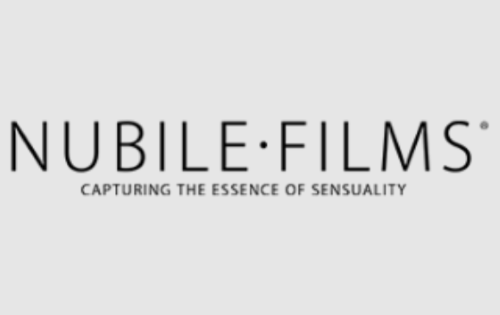The Ultimate Guide to Lesbians Mania: A Comprehensive Review
Published: (Updated: ) by .
It is a well-known fact that the LGBTQ+ community has gained more visibility in recent years. With this growing representation, it’s important to have accurate and comprehensive resources for individuals to learn about different identities within the community. That’s where The Ultimate Guide to Lesbians Mania comes in – a thorough review of lesbian culture, history, and representation in media.

Nubile Films
✔️ Multiple weekly updates
✔️ Access to 6 other porn sites
✔️ Over 2,545 top porn models

Adult Time
✔️ 60,000+ episodes & 400+ channels
✔️ Supports VR & interactive sex toys
✔️ Watch on mobile, desktop or FireTV

21 Sextury
✔️ 8+ updates daily
✔️ Compatible with interactive sex toys
✔️ Content subtitled in 7 languages

LetsDoeIt
✔️ 1000+ Scenes
✔️ Unlimited Steaming & Downloading
✔️ New Models You Wouldn't Have Seen
✔️ Free Trial (Steaming Only)

Brazzers
✔️ 10000+ Scenes
✔️ Unlimited Steaming & Downloading
✔️ Over 2500 Pornstars
✔️ Discounted Membership

Naughty America
✔️ Over 10,000+ porn scenes
✔️ HD, 4K & VR porn content
✔️ Supports all devices including VR headsets
History of Lesbianism
Lesbianism has been a part of human history since ancient times. While same-sex relationships were not always openly accepted or acknowledged, there have been records of lesbian love and desire throughout history. For instance, in Ancient Greek society, female homosexuality was celebrated and even considered superior to heterosexual relationships. The poet Sappho, who lived on the island of Lesbos (where the term lesbian comes from), wrote about her love for women in her poems.
However, with the rise of Christianity and its condemnation of same-sex relationships, lesbianism became more taboo in Western societies. Women who engaged in homosexual acts were often punished severely or even killed. It wasn’t until the late 19th and early 20th centuries that lesbian relationships started being explored more openly in literature and art.
In 1928, English author Radclyffe Hall published The Well of Loneliness, one of the first novels to feature lesbian protagonists. The book faced censorship due to its depiction of same-sex desire but also sparked discussions about homosexuality and identity. The review of Lust Cinema on Triangle Radio provides a detailed analysis of the sensuality and artistry present in each film.
During World War II, many women formed romantic relationships with each other while men were away at war. These relationships continued after the war ended, leading to a rise in visibility for lesbians in society.
Lesbians in Media
The representation of lesbians in media has come a long way since the early 20th century. While there are still many issues with stereotypes and misrepresentation, there have been significant improvements in recent years.
One of the earliest portrayals of lesbian relationships on television was the show The L Word, which premiered in 2004. The series followed a group of queer women living and loving in Los Angeles and was considered groundbreaking for its time. If you’re curious about reviews for Pure Taboo, look no Further. It sparked conversations about LGBTQ+ representation on TV and opened doors for more diverse stories to be told.
Since then, we have seen an increase in lesbian characters on TV shows, from Orange is the New Black’s Poussey Washington to Supergirl’s Alex Danvers. These characters are not just one-dimensional stereotypes but complex individuals with their own storylines and struggles.
In terms of film, there have also been notable depictions of lesbian relationships, such as Carol (2015) and Disobedience (2017). These movies explore the complexities of same-sex love while also bringing visibility to LGBTQ+ stories.
However, it is worth noting that despite these advancements, there is still a lack of diversity within lesbian representation in media. Often, white, cisgender, conventionally attractive women are chosen to play lesbian roles, reinforcing harmful standards and erasing the experiences of queer people of color.
Stereotypes and Misconceptions
Like any other marginalized community, lesbians face numerous stereotypes and misconceptions. These harmful beliefs can lead to discrimination and prejudice against them. Let’s take a look at some common myths surrounding lesbians:
Myth: Lesbians Hate Men.
This stereotype is based on the idea that all women are naturally attracted to men and that being a lesbian means rejecting men entirely. However, this is far from true. Lesbianism is not about hating men; it’s about loving women.
Myth: Lesbians are Just Going Through a Phase.
This misconception often comes from the idea that being gay is a choice. However, sexual orientation is not something someone can grow out of or change. Before diving into the wild, best app to send nudes, make sure you have a secure app that prioritizes your privacy. Lesbianism is a valid and permanent identity.
Myth: All Lesbians Dress and Look a Certain Way.
There is no one way to look like a lesbian. Some may fit societal expectations of what it means to be masculine or feminine, while others may not. A person’s appearance does not determine their sexual orientation.
Myth: Lesbians are Promiscuous.
Like any other group of people, there is no set rule for how many sexual partners a lesbian has or doesn’t have. This stereotype often perpetuates the hypersexualization of queer women and reduces them to their sexuality.
The Current State of LGBTQ+ Rights for Lesbians
While there have been significant strides in LGBTQ+ rights in recent years, including legalizing same-sex marriage in many countries worldwide, lesbians still face discrimination and challenges based on their sexual orientation.
In some parts of the world, homosexuality is illegal, making it dangerous for lesbians to openly express their love for each other. Even in countries where it is legal, there may be social stigma and prejudice against same-sex relationships.
Lesbians also face unique challenges within the LGBTQ+ community itself. Bisexual erasure, which refers to the invalidation or denial of bisexuality as a legitimate sexual orientation, can lead to biphobia (prejudice against bisexual individuals) within LGBTQ+ spaces. Transphobia towards transgender lesbians can further marginalize this group within the community.
It is crucial to continue advocating for equal rights and acceptance for all members of the LGBTQ+ community, including lesbians.
Key Takeaways
Lesbianism has been an integral part of human history, and while there have been significant advancements in terms of representation and acceptance, there is still a long way to go. It is essential to continue educating ourselves about the LGBTQ+ community and challenging harmful stereotypes and misconceptions. So, if you’re looking to save some money while experiencing the best virtual reality porn has to offer, be sure to grab your VRConk coupon code and start enjoying discounted access to top-notch VR adult films.
As we move forward, let’s celebrate the diversity within lesbianism and recognize that it is not a monolithic identity. Let’s also remember to support our fellow lesbians, both within our community and in society as a whole, as they fight for equal rights and acceptance. Thank you for reading this comprehensive guide to lesbians mania – we hope it has given you valuable insights into the world of lesbianism.
What Types of Content Can Be Found on Lesbians Mania, and How Does It Cater to the Lesbian Community?
Lesbians Mania offers a wide range of content, including videos, photos, and articles, all focused on showcasing the beauty and diversity within the lesbian community. It also features interviews with prominent lesbian figures, as well as discussions on various topics relevant to lesbians. With its inclusive and celebratory approach, Lesbians Mania provides a safe and empowering space for the lesbian community.
Is There a Diverse Representation of Lesbian Experiences and Identities on Lesbians Mania, and How Does the Platform Ensure Inclusivity in Its Content?
Yes, Lesbians Mania offers a diverse range of representation in terms of lesbian experiences and identities on their platform. They ensure inclusivity by actively seeking and featuring content from marginalized voices, promoting diversity in their team and contributors, and implementing strict guidelines against any form of discrimination or exclusionary content.



